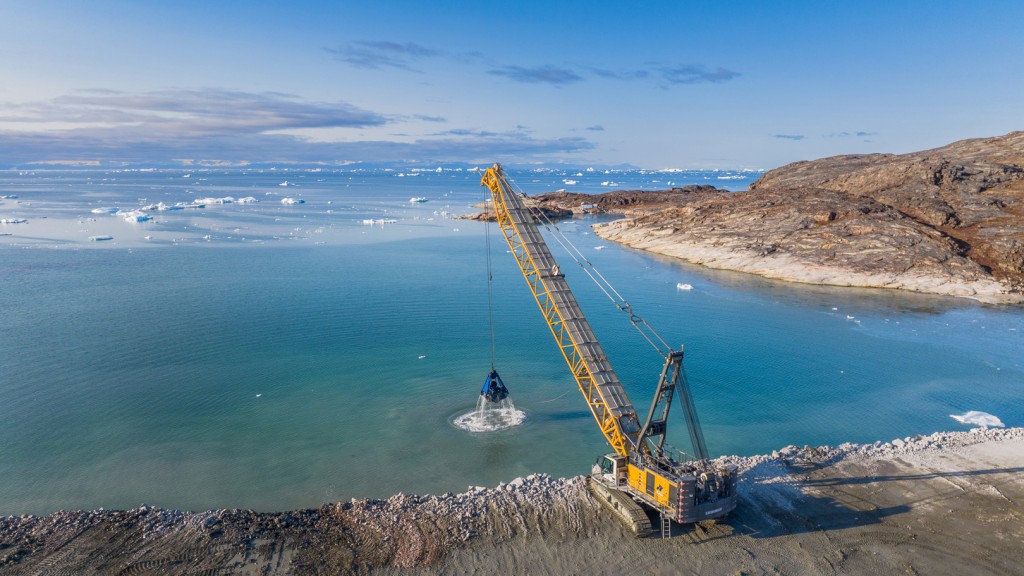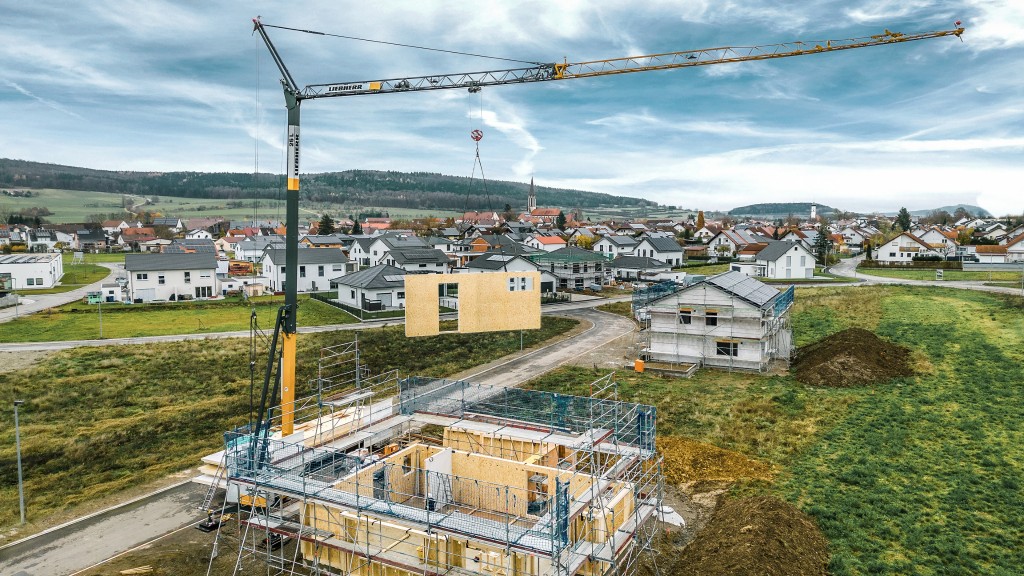Greenland airport projects take flight with help from a Liebherr crawler crane
Watch how the HS 8200 is supporting the growth of critical transportation above the Arctic Circle

A pair of airport projects is changing the transportation landscape for Greenland, and a Liebherr crawler crane is playing a key role. New airports in Ilulissat and Nuuk, in the western part of Greenland, will replace fields that could only accommodate propeller-driven planes previously with runways that can accept larger aircraft flying directly from Europe or the American mainland.
The new runway in Ilulissat is partly in the sea. A thick layer of clay sediment has to be removed from the seabed before it can be backfilled. Otherwise, settlement may occur over time. The Danish company Munck Civil Engineering, the main contractor for the two projects, is using the HS 8200 duty cycle crawler crane from Liebherr for this dredging work.
"In one day shift, our extraction rate can be up to 1,000 cubic metres of excavated clay material," explains construction manager Kevin van den Bos.
The 200-tonne duty cycle crawler crane is operating with a 35-metre long boom and a clamshell grab with a capacity of 3.5 cubic metres. To achieve high productivity, the HS 8200 is equipped with Liebherr's Dredging Assistant, which shows the operator the position and fill level of the grab, the number and duration of work cycles, or the handling performance in real-time. The system also makes it easier to calculate the amount of material needed to fill the area for the runway.
Munck Civil Engineering finds all the rock material used for this within the project boundaries. "In total, we have to drill and blast around 5.5 million cubic metres of rock material. We then transport this to the construction section so that we can subsequently build a 2-kilometre-long runway." After dredging, the duty cycle crawler crane is equipped with a stone grab to place stones along the new runway as part of the coastal protection program.
The average temperature in this region in summer is plus 8 degrees Celsius. In winter, it can drop to minus 35 degrees. "It is very important for us to complete the dredging work before the ice spreads in the bay and makes our work impossible." The duty cycle crawler crane was supplied with the Liebherr cold package to ensure that it is also operational in these very cold climatic conditions.
In addition to the icy conditions, the logistics are a major challenge. The region is only supplied by a ship once a week and also brings parts and equipment for Munck Civil Engineering. A large store and the ability to repair everything itself is therefore particularly important for the company in this remote region.
Munck Civil Engineering operates the HS 8200 six days a week in ten-hour shifts. Kevin van den Bos is delighted with the good performance of the duty cycle crawler crane, "The machine runs really well and has exceeded our expectations. We will finish even earlier than anticipated. That is really positive."
See how Liebherr's Dredging Assistant operates
Company info
1015 Sutton Drive
Burlington, ON
CA, L7L 5Z8
Website:
liebherr.com/en/can/about-liebherr/liebherr-worldwide/canada/liebherr-in-canada.html



